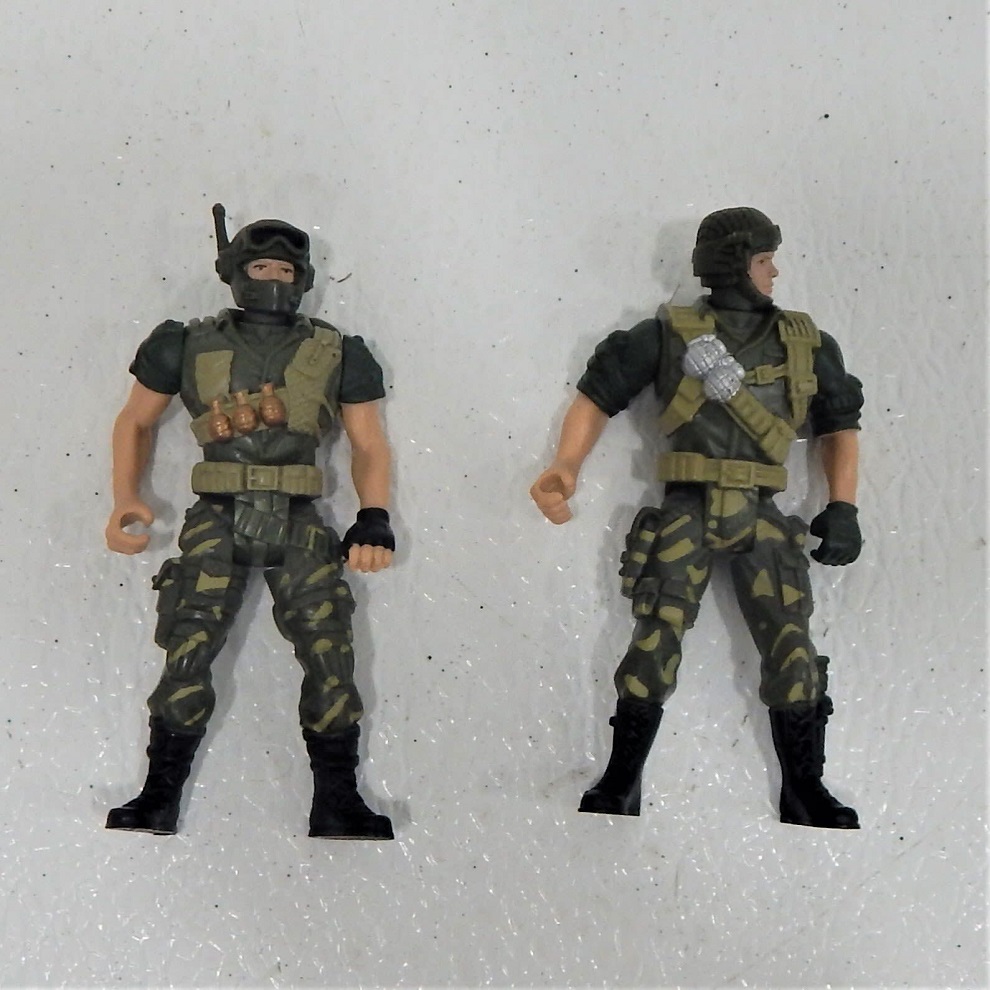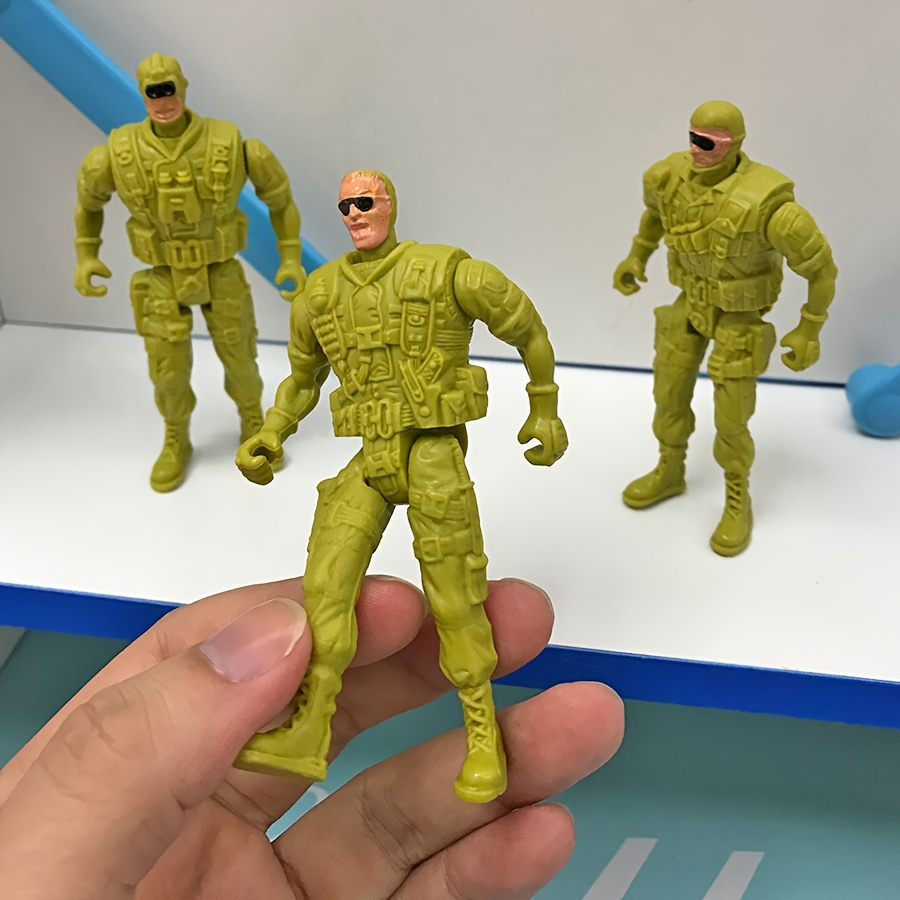Introduction to Military Action Figures
Military action figures have captivated the imagination of children and collectors alike for decades. These figures often depict soldiers, pilots, and other military personnel, complete with detailed uniforms, weapons, and accessories. Unlike typical toys, military action figures serve as miniaturized representations of real-world military history and technology. They offer a unique blend of education and entertainment, making them popular across various age groups.
The Historical Evolution
The origin of military action figures can be traced back to the 1960s. Hasbro’s launch of G.I. Joe in 1964 revolutionized the toy industry. G.I. Joe wasn’t just another doll; it was the first action figure. Standing at 12 inches tall, these figures were modeled after real soldiers. They could bend at multiple joints and came with a variety of uniforms and gear. This versatility set a new standard in the toy industry. Soon, other companies followed suit, creating their lines of military action figures.
In the 1980s and 1990s, the military action figure market experienced a surge in popularity. Companies like Mattel and McFarlane Toys began to produce action figures depicting more modern military personnel and equipment. Their releases included figures from various branches of the military: the Army, Navy, Air Force, and Marines. These newer figures often featured more sophisticated articulation and lifelike details, appealing to an older audience, including collectors.
The Cultural Impact
Military action figures have left a lasting impact on popular culture. They have played a significant role in the way military history is perceived and understood. For many, these toys are a child’s first introduction to the armed forces. Through play, children act out scenarios, engage in imaginative storytelling, and begin to understand the concepts of bravery and service. These figures also contribute to the nation’s collective memory of its military history.
Television shows and movies frequently feature military action figures. G.I. Joe, for instance, transitioned from action figures to cartoons and full-length movies. This cross-media presence further ingrains military themes into popular culture. The success of such franchises underscores the widespread appeal and cultural significance of military action figures.
The Collectors’ Paradise
For collectors, military action figures offer more than just playthings; they are valuable collectibles. Collecting military action figures has become a hobby steeped in community and tradition. Online forums, conventions, and collector’s clubs provide platforms for enthusiasts to share their passion. The most sought-after figures can fetch thousands of dollars, especially those in mint condition or limited editions.
Collecting also has an educational aspect. Many collectors delve deep into the history and significance of the figures they collect. They often research the specific units, battles, and military technologies the figures represent. This academic interest elevates the act of collecting from mere accumulation to a form of historical preservation and education.
The Detailed Art of Craftsmanship
Design and Manufacturing
Creating a military action figure involves a meticulous design and manufacturing process. Designers and sculptors start by researching their subjects thoroughly. They consult photographs, blueprints, and even actual military equipment to ensure accuracy. This research phase is crucial; it ensures that each figure accurately represents the real-life personnel or equipment it is modeled after.
After the initial design phase, sculptors craft prototypes. These prototypes are usually made from clay or wax and are detailed to the finest point. Next, these prototypes undergo a molding process. Factories often use injection molding to produce the final plastic figures. These figures are then painted and assembled, often by hand, to ensure high-quality finishes.
Attention to Detail
One of the standout features of military action figures is their attention to detail. Uniforms are often made from actual fabric. Weapons and accessories are modeled to scale and painted for realism. Some figures even have removable gear, allowing for greater interaction and play. The focus on detail sets military action figures apart from other types of toys. This dedication to realism makes them a favorite among collectors and enthusiasts.
Articulated joints are another important feature. Early figures had limited movement, restricted to bending at the waist or shoulders. Modern figures, however, can move at multiple points, including elbows, knees, and wrists. This enhanced articulation allows for more dynamic posing and storytelling. For collectors and photographers, the ability to pose figures in various ways adds significant value.
Collaborative Efforts
Producing military action figures often involves collaboration with experts. Companies frequently consult military historians, former service members, and technical advisors to ensure accuracy. This collaborative approach ensures that the figures are not only visually accurate but also represent historical and technical details faithfully. These collaborations lend the figures an authenticity that appeals to both collectors and casual buyers.
Licensing deals are also common. Military museums, historical societies, and even branches of the armed forces sometimes license their images and logos for use on the figures. These official endorsements add another layer of authenticity and appeal to collectors seeking official, sanctioned replicas.
Modern Innovations
Technological Advancements
With the advent of new technology, military action figures have evolved significantly. 3D printing, for example, allows for even more detailed and accurate models. Designers can now create prototypes and finished products with unparalleled precision. This technology also allows for limited-run figures, which adds to the collectible value.
Augmented Reality (AR) and Virtual Reality (VR) are also making their way into the world of military action figures. Some new figures come with QR codes that can be scanned to unlock additional content. This content can include historical information, interactive games, or augmented reality features that bring the figures to life. These tech enhancements are particularly appealing to younger audiences who are tech-savvy and seek interactive experiences.
Customization Options
Customization is another burgeoning trend. Collectors can now order figures that are customized to their specifications. Want a figure of a specific soldier from a particular battle? Many companies offer this service. Some even provide 3D scanning to create personalized figures that resemble the buyer or a loved one.
Online platforms and forums have also fostered a community of do-it-yourself (DIY) enthusiasts who modify existing figures. Custom paint jobs, gear swaps, and even 3D-printed accessories allow for endless personalization. This DIY culture adds another layer of engagement, making military action figures not just items to be collected, but projects to be worked on and improved.
The Educational Value
Teaching History
Military action figures are more than just toys; they are educational tools. They offer a tangible way for people to engage with military history. Teachers and educators often use these figures in classrooms. They can illustrate historical events, military strategies, and technological advancements. Compared to textbooks, which can be dry and abstract, action figures offer a more engaging and hands-on method of learning.
Museums also utilize military action figures in their exhibits. Life-sized dioramas using action figures can recreate famous battles, showcasing the tactics and equipment used. These displays serve an educational purpose, engaging visitors in a more immersive form of learning.
Building Empathy and Understanding
Another educational benefit is the potential to build empathy and understanding. By interacting with these figures, children and adults alike can gain a better appreciation for the sacrifices made by military personnel. The figures serve to humanize soldiers, allowing people to see them as individuals with their stories, rather than just faceless entities in a uniform.
Military action figures also provide an opportunity to discuss broader social and ethical issues. War, peace, duty, and sacrifice are complex topics. Through the lens of these figures, educators can start meaningful conversations about these themes. This type of engagement is invaluable for developing critical thinking and emotional intelligence.
Promoting STEM Education
The attention to detail in military action figures extends to the technology and engineering they represent. Understanding how different vehicles, weapons, and gear work can spark interest in fields like engineering and technology. Some figures come with detailed manuals and background information that delve into the science behind the machinery. This educational aspect can inspire young minds to explore careers in STEM fields.
Future Trends
Sustainability Efforts
As the world becomes more conscious of environmental issues, the toy industry, including military action figures, is also shifting towards sustainability. Companies are exploring eco-friendly materials, such as biodegradable plastics and recycled packaging. This shift not only benefits the planet but also appeals to environmentally-conscious consumers. Sustainability could become a standard feature in the future of military action figures.
Diversification and Inclusion
Diversity and inclusion are becoming central to the future of military action figures. Historically, most figures have depicted male, often Caucasian soldiers. However, companies are beginning to produce figures that represent a broader spectrum of humanity. Female soldiers, soldiers of different ethnic backgrounds, and even differently-abled figures are starting to become more common. This push toward inclusivity allows for a more accurate representation of modern military forces and meets the growing demand for diverse figures.
Pandemic and Future-Proofing
The COVID-19 pandemic has also influenced the industry. As people spent more time at home, the demand for hobby-related activities soared. Military action figures saw a resurgence in popularity as both playthings and collectibles. Moving forward, companies are likely to focus on online sales and virtual engagement. E-commerce platforms and social media marketing have proven effective and will likely continue to be vital channels for reaching consumers.
Conclusion
Military action figures are much more than simple toys. They are a complex blend of history, craftsmanship, culture, and education. From their origins in the 1960s to their modern iterations equipped with cutting-edge technology, these figures offer something for everyone. Collectors value them for their detail and historical accuracy, educators utilize them as teaching tools, and children play with them, igniting their imaginations.
As the world continues to evolve, so too will military action figures. Whether through technological advancements, customization options, or increased attention to diversity and sustainability, the future looks promising. Military action figures will likely remain a beloved part of popular culture for decades to come, continuing to entertain, educate, and inspire new generations.





